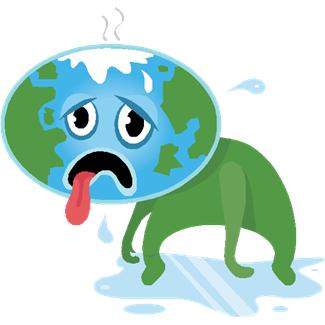The Sources of Public Delusion
How party politics have driven Americans to embrace blatant falsehoods.

But it is hardly the only source. Another one that Mearsheimer also identifies but is not the main subject of his book is other forms of deception, besides outright lying, by political leaders. This particularly means spinning, or the selective and tendentious use of material without uttering direct falsehoods. The Bush administration's selling of the Iraq War, for example, although it involved some lies, was at least as much a matter of imparting false impressions through spinning. And then beyond what national leaders do is the influence of bloviators and commentators, especially in the broadcast media, who are responsible for propagating much of what is false and delusional in the public mind.
Yet another source of public misconception is identified in the Washington Post's front-page story about Mitt Romney's acceptance of the fact of human-induced climate change despite the unpopularity of that acceptance on the political right. Beliefs, or disbelief, about climate change is typical of many public conceptions or misconceptions in that they are in large part a function of party or ideological identities. The Gallup poll cited in the Post article showed that 62% of Democrats but only 32% of Republicans believe that the effects of global warming have already begun to happen. Similarly, 71% of Democrats but only 36% of Republicans believe that a rise in temperatures is due to pollution from human activities.
Note that these are beliefs regarding the physical facts of what is happening in the earth's atmosphere, not preferences regarding public policy, although there are policies that implicitly can be associated with those beliefs. And unlike factual beliefs that can logically and directly be connected with ideological beliefs associated with one or the other of the parties (such as, for example, beliefs about how people's spending and work habits change in response to changes in tax rates), any substantive connection between ideology and beliefs about warming of the atmosphere is at best tenuous. Clearly the beliefs in this case are largely being formed not as part of a coherent belief system, let alone formed as a result of objective examination of evidence, but instead as a result of political identities or the influence of commentators or leaders associated with those identities. It is almost a tribal phenomenon. People believe things because certain beliefs are associated with the Republican tribe or the Democratic tribe, and because people associate themselves with one or the other of the tribes.
This source of public delusion and misconception is unfortunately self-reinforcing, as the Romney story shows. Although Mr. Romney may welcome some resistance from the right on this one issue as a way of countering his image as a flip-flopper, the fact there is any significant resistance demonstrates how much of a barrier the nation's political divide can be to better public understanding, and how political hot air can impede public knowledge of something as straightforward as atmospheric hot air.
